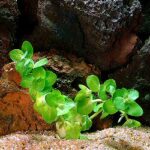Hier geht’s um Wasserpflanzen!

Wenn dich Wasserpflanzen interessieren, dann bist du hier richtig. Denn hier treffen sich Aquarianer um sich über das schönste Hobby der Welt zu unterhalten. Dazu treffen wir uns in 7 Regionen in Deutschland und tauschen Erfahrungen und unsere Pflanzen aus.
anstehende Termine
- 25. Juli/20:00 – 23:00
Roland Beer: Wenn Wasserpflanzen ungehindert wachsen können
Ort: RG Bayern-Süd: Vereinslokal Aquarienfreunde Dachau/Karlsfeld - 25. Oktober/12:00 – 17:00
Jörg Corell Wasserpflanzen emers?
Ort: RG Bayern-Süd: Gasthaus „Drei Rosen“, Dachau
News aus der Wasserpflanzenwelt …
- Algen als Multitalente für Kulinarik und Wirtschaft 15.10.2024
- Pflanzen gehen bei der Aufnahme von Kalium energiesparend vor 09.10.2024
- Wasserpflanzen managen: Warum Nichtstun auch eine Option ist 10.09.2024
- Photosynthese im fast Dunklen – Forschungsteam publiziert neue Ergebnisse des MOSAiC-Projekts 04.09.2024
- Handel mit invasiven Arten: Beispiel Muschelblume 01.09.2024

